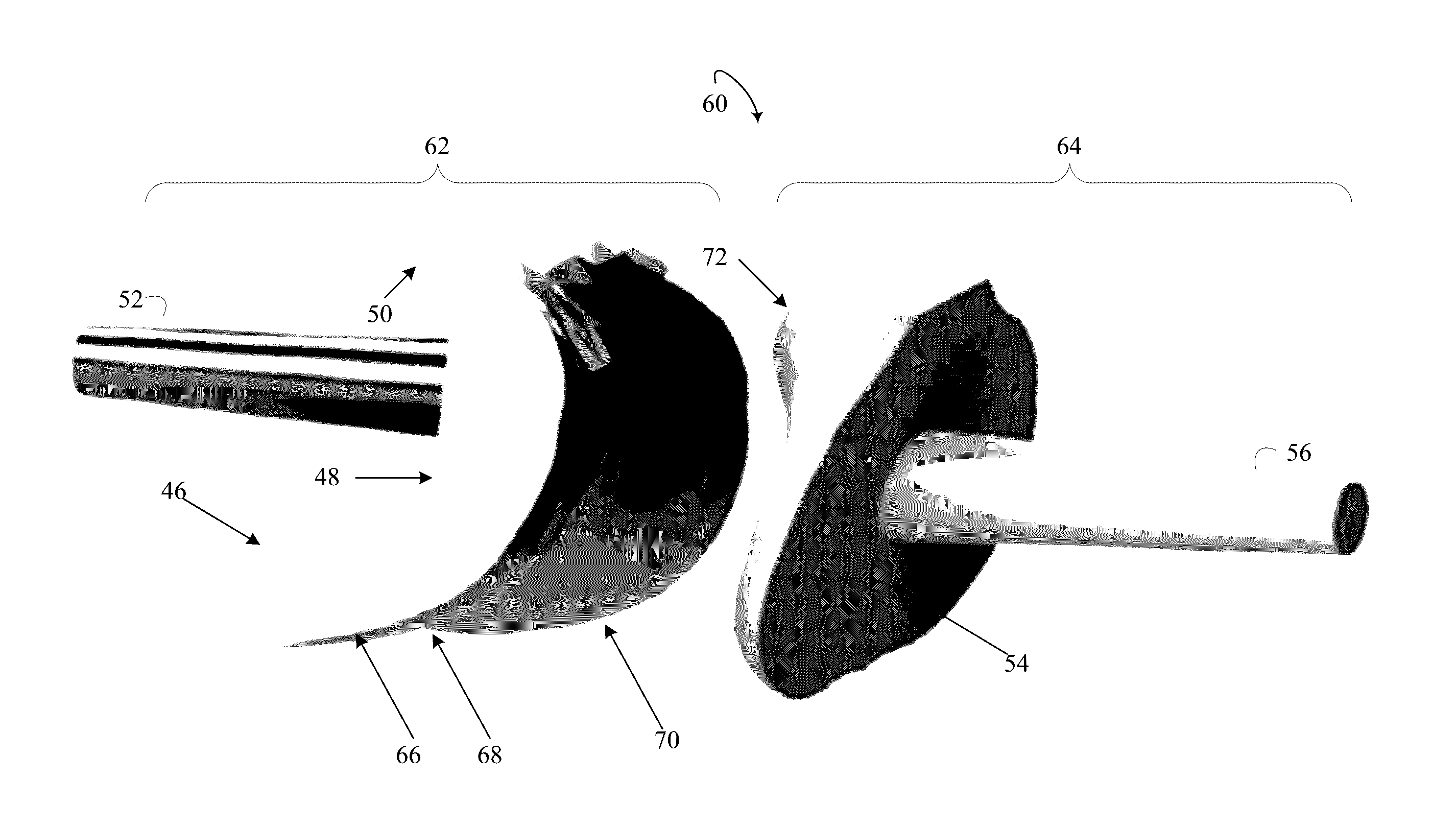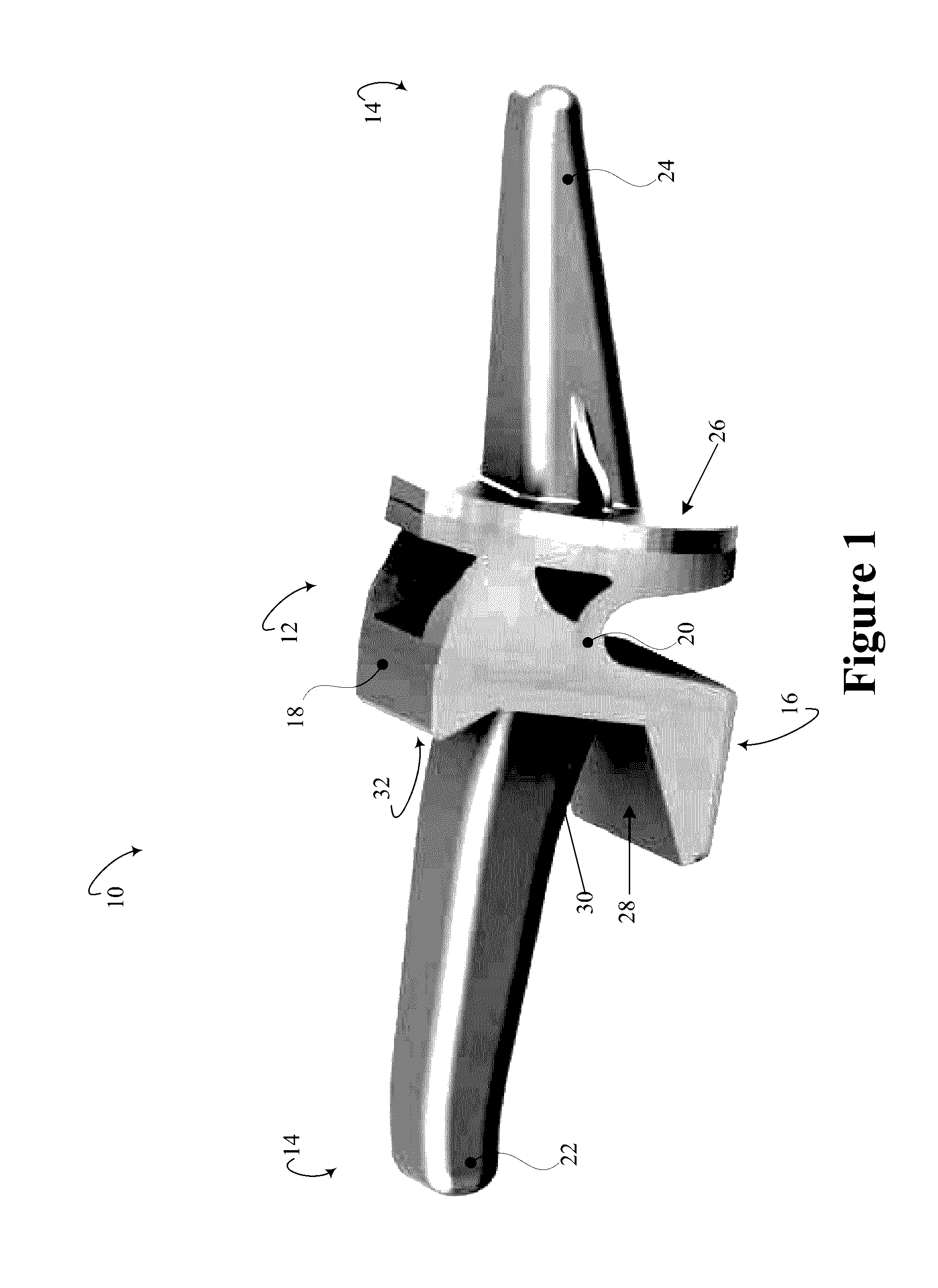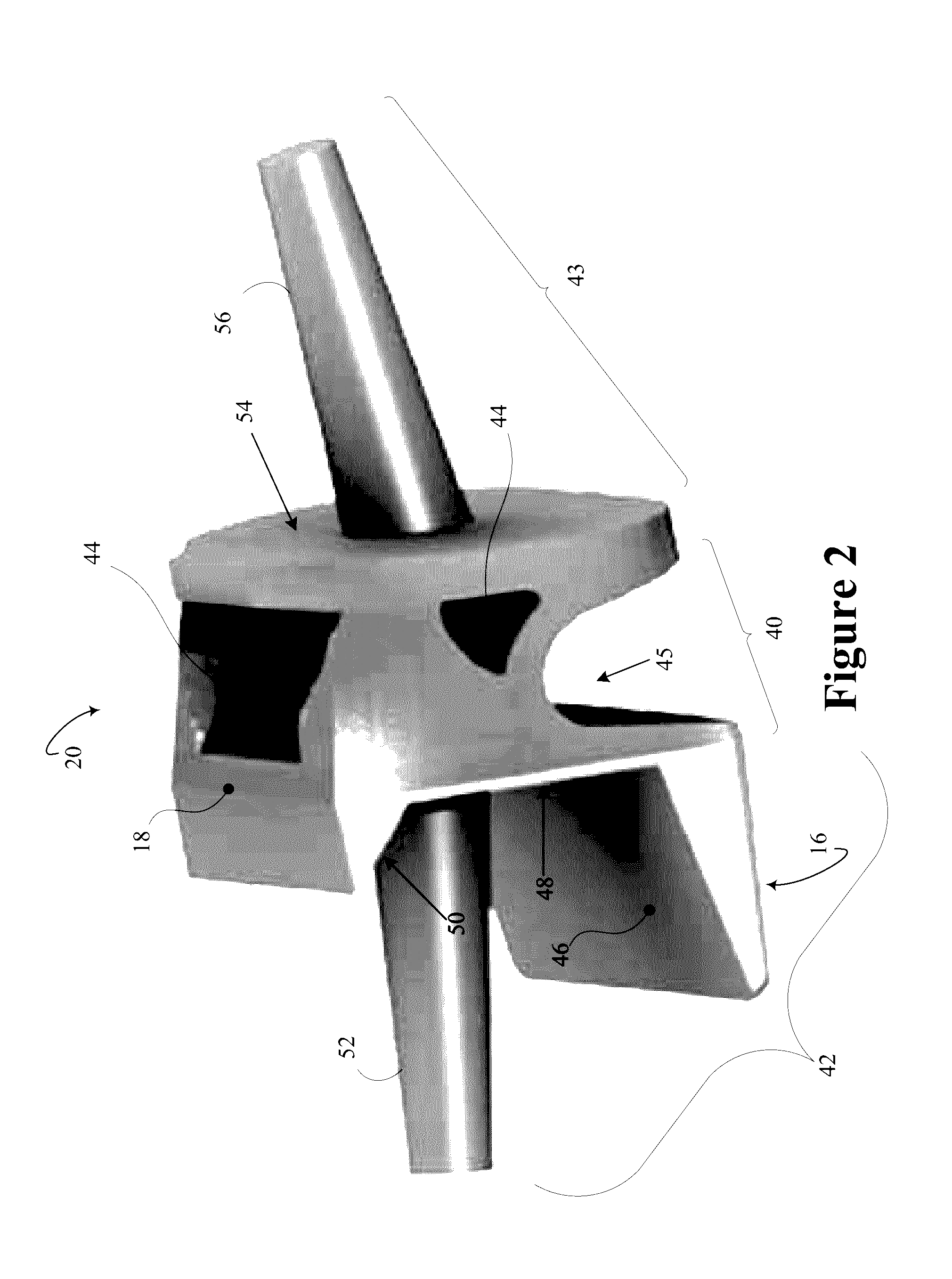Proximal interphalangeal joint prothesis
a technology of interphalangeal joint and prothesis, which is applied in the field of interphalangeal joint replacement, can solve the problems of no longer viable joints, further damage to surrounding tissues, and hand or foot pain, and achieve the effect of facilitating osseointegration
- Summary
- Abstract
- Description
- Claims
- Application Information
AI Technical Summary
Benefits of technology
Problems solved by technology
Method used
Image
Examples
Embodiment Construction
[0020]Initially referring to FIG. 1, an example modular PIP prosthesis 10 in a perspective view with a mobile element 12 coupled to fixation elements 14 is schematically illustrated. The modular PIP prosthesis 10 is manufactured from one or more biocompatible materials. The view of the modular PIP prosthesis 10 is oriented with palmar surfaces 16, i.e. facing the same direction as palm of the hand, and dorsal surfaces 18, i.e. facing the same direction as the back of the hand. The mobile element 12 includes a constrained mobile element 20. The modular PIP prosthesis 10 includes fixation elements 14 which are coupled to the constrained mobile element 12. The mobile element 12 can include an unconstrained element or a partially constrained element. The mobile element 12 can be selected intraoperatively from the unconstrained, partially constrained, and constrained mobile elements. In some instances, the selection can be guided by a state of soft tissue. For example, an unconstrained m...
PUM
 Login to View More
Login to View More Abstract
Description
Claims
Application Information
 Login to View More
Login to View More - R&D
- Intellectual Property
- Life Sciences
- Materials
- Tech Scout
- Unparalleled Data Quality
- Higher Quality Content
- 60% Fewer Hallucinations
Browse by: Latest US Patents, China's latest patents, Technical Efficacy Thesaurus, Application Domain, Technology Topic, Popular Technical Reports.
© 2025 PatSnap. All rights reserved.Legal|Privacy policy|Modern Slavery Act Transparency Statement|Sitemap|About US| Contact US: help@patsnap.com



